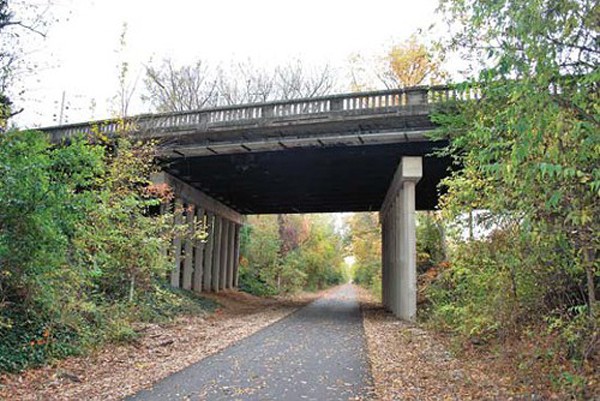A plan will soon move forward that could eventually connect Shelby, Crittenden, DeSoto, and Fayette counties with a network of 500 miles of greenways.
It’s the first recommendation from those who have guided the Mid-South Regional Greenprint plan for the past three years.
Shelby County won $2.6 million in 2011 from the U.S. Department of Housing and Urban Development to develop a long-term vision for the area’s green spaces, including parks, greenways, community gardens, storm water management, and waterways.
The planning process has so far included 80 organizations, 18 municipalities, four counties, three states, and input from thousands of residents, as well as civic and business leaders.
 Bianca Phillips
Bianca Phillips
The overall plan is broad, covering everything from fair housing to bus transit. But Greenprint leaders said they wanted to focus on greenways first.
“One of the things we quickly found is that everybody — regardless of where you are on the political spectrum, or race, or gender — saw a passion in connecting our communities through greenways and trails,” said Paul Young, Greenprint program administrator.
Young was speaking to a group last week comprised mostly of city mayors from within the Greenprint boundaries. Young, Greenprint Program Manager John Zeanah, and others told the mayors that the planning phase will be done in November and that their help was needed in the next step — implementation.
A draft of the greenways plan will be made public in a couple of weeks, Zeanah said, and the review process will be completed in November. Greenprint leaders will then take the plan to the elected bodies in 18 cities and four counties for their approval. He called this a “critical point” as the plan moves from discussion to implementation.
“We want to get uniform adoption so we can demonstrate regional buy-in,” Zeanah said. “This will be particularly important as we try to leverage funding from state, federal, and local governments and from private sources.”
No price tag for the greenways project has been made public so far.
The notion of such a large network of greenways was sold to the group of mayors as more than just a recreational amenity but also as a portal for community development, improved transportation options, and for better health and environment. But it was mainly sold as a possible tool for economic development.
“You can locate a business anywhere in the world today,” Ed McMahon, with the Washington, D.C.-based Urban Land Institute, told the group. “Why in the world would you locate it in Memphis, Tennessee over any other place across the globe?”
The answer he gave: quality of life. McMahon said the Memphis region could use the system as a tool to attract employers and employees alike. The system could also help brand the city, he said.
“Wouldn’t it be nice if Memphis, Tennessee, was thought of as the greenest city in the southern United States?” he asked. “I think you have an opportunity to build that brand.”
The plan was also made attractive to the gathered mayors since it can be implemented piece by piece, instead of all at once. No construction timeline is available yet.
Memphis Mayor A C Wharton preached vigilance to the group for when the time came to implement the plan.
“Do not be afraid to get knocked down a whole bunch of times,” Wharton told the group. “The [Shelby Farms] Greenline died in late 2001. Of course we resuscitated it. Taking over the CSX line died two or three times. Even in its short life, the Harahan Bridge project [Main Street to Main Street Multi-Modal Connector project] has died so many times.”